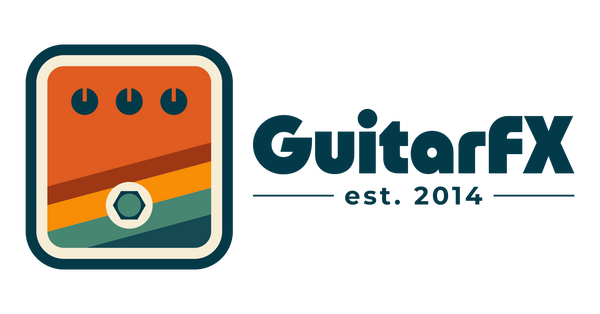What is a Chorus effect?
Share
Introduction
Chorus pedals, renowned for their lush, rich soundscapes, have played a pivotal role in shaping the tone of many iconic guitarists. This guide delves into the world of chorus effects, uncovering their history, mechanics, and the magic they bring to the guitar's sound.
The Journey of Chorus Pedals: A Historical Overview
Chorus effects, which began their journey in the late 1970s, transformed the sonic landscape of guitar music. Initially created as analog devices, these pedals replicated the sound of multiple guitars playing in unison, adding depth and movement to the guitar's tone. Over the years, technological advancements have led to the development of digital chorus pedals, offering more precision and versatility. This section traces the evolution of chorus pedals from their analog origins to their modern digital forms, highlighting key innovations along the way.
Understanding Chorus: The Mechanics Behind the Magic
A chorus pedal creates its effect by duplicating the original guitar signal, delaying one of the copies, and subtly modulating its pitch. The interaction between the delayed and original signals results in a shimmering, dynamic sound. Key parameters of chorus pedals, such as rate, depth, and mix, are crucial in shaping the chorus effect. This section explains how these parameters work and how they can be adjusted to achieve a range of sounds, from subtle widening to a lush, watery effect.
Types and Variations of Chorus Pedals
- Analog Chorus Pedals: Favored for their warm, organic sound, these pedals use bucket-brigade devices (BBDs) to create the chorus effect.
- Digital Chorus Pedals: These offer cleaner, more precise chorus effects and often come with additional features for greater sound shaping.
- Stereo Chorus Pedals: Designed to create a wide, spacious sound, stereo chorus pedals are perfect for creating an immersive stereo field.
- Multi-Effect Pedals with Chorus: These units combine chorus with other effects, offering versatility and convenience in a single package.
Integrating Chorus into Your Rig: Tips and Techniques
The placement of a chorus pedal in your signal chain can significantly affect its performance. Typically placed after overdrive/distortion pedals and before delay and reverb, chorus pedals can also be experimented with in different parts of the chain for unique effects. This section offers practical tips on integrating chorus into various pedal setups and explores how its position affects the overall sound.
The Interplay with Different Amplifiers and Guitars
Chorus pedals can interact differently with various types of amplifiers and guitars. The nuances of tube amplifiers, solid-state amps, and different guitar pickups (single-coil vs. humbucker) are explored, demonstrating how each combination can influence the character of the chorus effect.
Legends of the Chorus Pedal: Iconic Users and Their Gear
- Andy Summers (The Police): Summers utilized the Roland Jazz Chorus-120 amplifier, renowned for its built-in chorus effect, to craft his signature shimmering tone.
- Robert Smith (The Cure): Smith often employed the Boss CE-2 Chorus, a staple on his pedalboard, to create The Cure's atmospheric, textured sound.
- Kurt Cobain (Nirvana): Cobain's use of the Electro-Harmonix Small Clone chorus pedal was integral to Nirvana's sound, adding a haunting depth to songs like "Come as You Are."
- Alex Lifeson (Rush): Lifeson frequently used the Boss CE-1 Chorus Ensemble, enriching Rush's progressive rock sound with its sweeping, lush chorus.
Advanced Applications: Exploring the Full Potential of Chorus
Beyond basic settings, chorus pedals offer a vast array of creative possibilities. Stacking chorus with other modulation effects, using it in stereo setups, and employing it for specific musical genres are some of the advanced applications covered in this section.
Choosing Your Chorus: A Guide to Finding the Right Pedal
Selecting the right chorus pedal involves considering various factors such as musical style, desired tonal characteristics, and compatibility with other gear. This chapter provides a guide to choosing a chorus pedal that suits your needs, discussing the importance of features like tone controls, true bypass vs. buffered bypass, and build quality.
Conclusion
Chorus pedals offer a unique way to enhance the guitar's tone, adding depth, movement, and richness. Understanding and effectively utilizing these pedals can open up new dimensions in your sound.
FAQs
Q: How do I prevent my sound from becoming too muddy when using a chorus pedal? A: To avoid muddiness, start with conservative settings and gradually increase the depth and rate. Be mindful of the mix control, as too much chorus effect can overpower your original tone.
Q: Can I use a chorus pedal with an acoustic guitar? A: Yes, a chorus pedal can add a beautiful dimension to an acoustic-electric guitar's sound, especially in a live setting.
Q: Are there any specific chorus pedals you recommend for beginners? A: For beginners, a pedal with straightforward controls like the Boss CH-1 Super Chorus or the MXR M234 Analog Chorus is a great starting point. They offer quality effects with user-friendly interfaces.
Q: Can chorus pedals be used in genres other than rock or pop? A: Absolutely. Chorus pedals are versatile and can be used across various genres, including jazz, blues, and ambient music, to add texture and depth to the sound.
